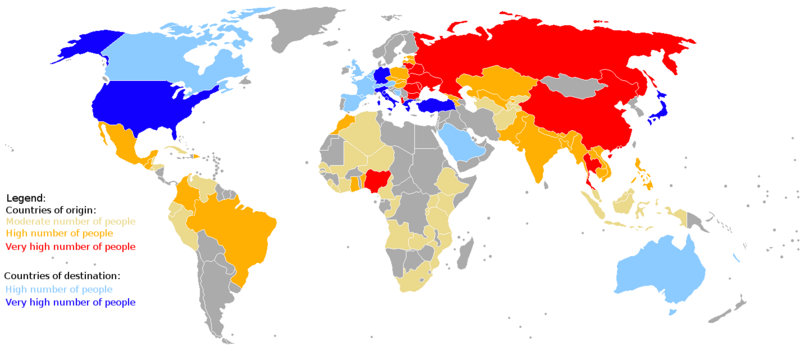Usòrò:Trafficking of women, children and men.png

Otu nyochaa a ha:800 × 351 piksels Ndị ọzọ mkpebi:320 × 140 piksels | 640 × 281 piksels | 1,425 × 625 piksels.
Failụ si na nke mbu (1,425 × 625 pixel, ívù akwukwo orunótu: 49 KB, MIME nke: image/png)
Ịta nke usòrò
Bìri èhì/ogè k'ị hụ òtù ụ̀fa dị̀ m̀gbè ahụ̀.
| Èhì/Ogè | Mbọ-aka | Ógólógó na asaá | Òjìème | Nkwute | |
|---|---|---|---|---|---|
| dị ùgbu â | 11:15, 10 Jenụwarị 2012 |  | 1,425 × 625 (49 KB) | Genetics4good | Netherlands and Belgium were colored as country of destination, as too mentioned at http://www.moraviaschool.org/tfiles/folder2410/Map%20of%20Human%20Trafficking.jpg |
| 06:48, 31 Mee 2011 |  | 1,425 × 625 (49 KB) | Genetics4good |
Ojiji faịlụ
Ihe ndị na-eso ihe eji Ihu akwụkwọ eme na faịlụ a:
Ejiji failụ zụrụ ọha
Wikis ndi a edeputara na eji kwa failụ a:
- Ihe eji na ar.wikipedia.org
- Ihe eji na ca.wikipedia.org
- Ihe eji na en.wikipedia.org
- Ihe eji na en.wikinews.org
- Ihe eji na es.wikipedia.org
- Ihe eji na fi.wikipedia.org
- Ihe eji na fr.wikipedia.org
- Ihe eji na id.wikipedia.org
- Ihe eji na lfn.wikipedia.org
- Ihe eji na mk.wikipedia.org
- Ihe eji na pt.wikipedia.org
- Ihe eji na ru.wikipedia.org
- Ihe eji na sr.wikipedia.org
- Ihe eji na tr.wikipedia.org
- Ihe eji na uk.wikipedia.org
- Норвегія
- Населення України
- Населення Литви
- Населення Мавританії
- Торгівля людьми
- Населення Бразилії
- Населення Польщі
- Населення Грузії
- Населення Естонії
- Населення Сполучених Штатів Америки
- Населення Аргентини
- Населення Землі
- Населення Монако
- Населення КНР
- Населення Греції
- Населення Японії
- Населення Узбекистану
- Населення Есватіні
- Населення Болгарії
- Населення Білорусі
- Населення Сан-Марино
- Населення Андорри
- Населення Ліхтенштейну
- Населення Люксембургу
- Населення Албанії
- Населення Ісландії
- Населення Португалії
Lee more global usage of this file.
